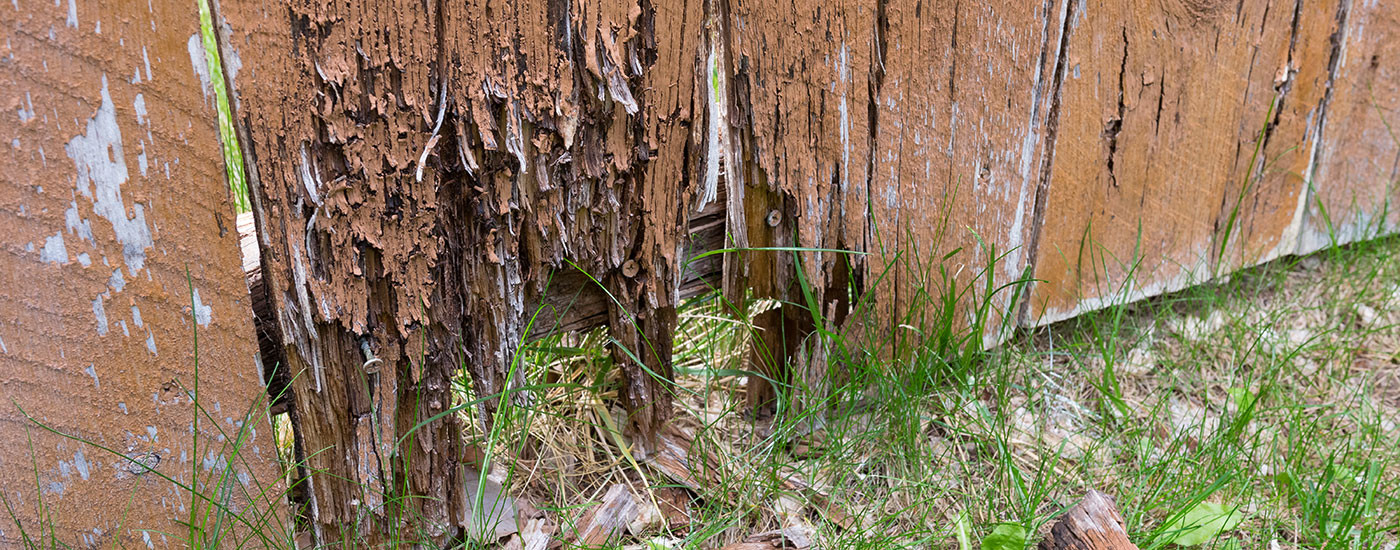In the UK, with our unforgiving climate, fences are particularly prone to wet rot. Although the science behind it is pretty revolting, there are lots of measures that can be taken to prevent, or at least slow down, the rot in our fences.
What causes a wooden fence to rot?
When wood gets wet, the soluble organic compounds in the timber start to dissolve in the water. This causes a breakup of the wood’s structure, making it more porous and more at risk from attack by microbes. This break up in the timber’s structure is followed by parasitic attack from a variety of creatures including termites, millipedes, wood lice and worms, as well as fungi. The rate of decay will be considerably faster in warm, damp conditions.
How to stop a wooden fence from rotting
So, how can you stop a wooden fence from rotting? Luckily, there are plenty of things that can be done to prolong the life of your timber fence.
Pressure-treated fence panels
When it is time to replace your fencing, or if you are installing a new fence, always look for fence panels that are labelled ‘pressure treated’. The pressure treatment applied to timber fencing is proven to extend the lifespan of your fence and will protect it against rotting. At Witham Timber, all our wooden fence panels are pressure treated to save you time and money.
Fence treatment
When installing or replacing a timber fence, always apply a timber treatment, repeating once a year as part of your annual maintenance. This will help to seal the wood and prevent it from soaking up water, and particular attention should be paid to timber fence posts. Our shed and fence wood treatments are eco-friendly and offer a safe alternative to Creosote. Shed and Fence is available in a range of colours; just one coat will weather-proof your fencing, with subsequent coats deepening the colour while extending the fence’s lifespan even further. Our blog 5 ways to care for wooden fences is full of tips on how to treat your fence.
What are gravel boards?
A gravel board is positioned underneath fence panels with the purpose of raising them away from wet soil and debris. Although gravel boards are not essential, they will extend the durability and lifespan of your timber fencing, by providing a barrier between your fence and the ground. Gravel boards will also give your fencing a neater look by closing any gaps at the bottom of the fence.
Types of gravel board
At Witham Timber, we supply wooden gravel boards and concrete gravel boards. Both types will serve the same purpose and your choice will depend on personal preference. Our timber gravel boards are pressure treated for longer life and will require regular maintenance with preservative, while our concrete gravel boards are more hardwearing and are heavy-duty and robust.
Clear debris from the bottom of your fence
Keeping the base of your wooden fence free from anything that could create damp conditions for the timber, is vital. Make sure leaves, vegetation and grass are not allowed to build up as, once this starts to rot down, the rot will quickly spread through the timber.
Secure fence posts correctly
When securing new fence posts, ensure that you slope the concrete footings away from the fence posts. This will allow rain water to drain away from the post, rather than straight down into it where it will penetrate the wood over time, causing it to rot.
These simple steps will help you to prolong the life of your timber fencing and prevent it from rotting. When you do replace your fencing, Witham Timber has all the supplies you need to install and maintain it to keep it in the best possible condition. For any further advice on your fencing needs, please call us on 01205 359188 or email sales@withamtimber.co.uk

